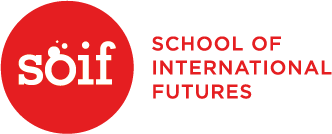
Authors:
Cat Tully, Director of School of International Futures (SOIF)
Sarmad Khan, Team Leader and Policy Advisor – RC System Leadership, UNDOCO
*********
The Sustainable Development Goals (SDGs) are a global framework reflecting the complex and interdependent nature of the opportunities and challenges that face us as we reach for our 2030 vision: an aspiration that we address poverty through prevention and resilience thinking, while leaving no-one behind and staying within our planetary boundaries.
In our pursuit to support national governments in achieving the 2030 Agenda we are working within increasingly complex and uncertain environments, where our leadership skillsets and capabilities would need to be taken to the next level. The UN Secretary General repeatedly emphasized that to steer and lead our UN development system planning and processes, UN Resident Coordinators and UN Country Teams should be able to employ strategic foresight methodologies.
Strategic foresight is neither new nor a panacea, but offers new angles, approaches and skillsets for better understanding alternative futures and creating resilient development policy responses. Strategic Foresight enables policy-makers and decision-makers to engage with the future in a systematic way to make better decisions today.
By engaging with the drivers of change out to 2030 and beyond, including technological disruptions and demographic or values shifts, we can approach the strategic planning cycle – including implementation and monitoring – in a way that looks at future developments differently. Participative, integrated, and informed dialogues about the future will help us move beyond the business as usual trajectory that comes from static and linear planning processes based in the present.
UN leaders can usefully apply foresight approaches whether working at a global HQ level, in regions or in country teams. This can be applied at a personal level – by building individual futures literacy and understanding. It can be applied at an organisational level, by building the capability to be ‘futures-prepared’ into programmes, policies, and teams. And it can be applied in engaging with host Government long-term strategic planning processes, serving as a vehicle to bring different stakeholders together to design desired futures and understand the ways to achieve them.
The good news is that many other development partners are exploring the potential of strategic foresight for themselves and their programmes. The World Bank is exploring how to build emerging country capability to harness the disruptive and exponential economic growth potential of technological innovations. The UK’s Overseas Development Institute (ODI) ran its annual conference last year for strategy leads in development ministries on “Resilience in an age of risk – Navigating a new world order: the art and science of foresight” and the Department For International Development’s Chief Scientific Adviser and Germany’s GTZ (Gesellschaft für Technische Zusammenarbeit) have been exploring the importance of engaging with disruptive trends and managing uncertain environments – both within donor programmes and also as part of building governance capability in recipient countries.
Within the UN, recent reforms, reports and speeches have reflected growing interest in futures and strategic foresight as a means to help achieve the SDGs and engage with an uncertain future. At the country level, UN has been experimenting with strategic foresight approaches that now need to be integrated in global development planning processes.
There are very many ways this can help:
- Globally – identifying the key, emergent frontier issues to better mitigate their risks and harness their opportunities. Using scanning and scenarios to support integrated action on prevention and resilience across the Development-Humanitarian-Peacebuilding nexus
- Regionally – developing ‘futures awareness’ through horizon scanning programmes, creating foresight/strategic planning units and connecting with a wide variety of other regional stakeholders
- Country level (including city level) – engaging with government and a wide-cross section of communities and citizens to ensure local perspectives and needs are identified and addressed. Leading UN Country Teams on integrated analysis, planning and foresight processes to deliver results externally through supporting host Government whole of government SDG strategic planning.
And internally by setting the strategic direction, developing and delivering the Common Country Analysis (CCA) and MAPS – Mainstreaming, Acceleration and Policy Support – for the 2030 Agenda, and ensure that United Nations Development Assistance Framework (UNDAF) strategic priorities are reflective of broader and emerging changes that might occur between now and 2030.
In an effort to demystify the concept and application of foresight, the Leadership Exchange Series (LEADX) ran an event on Thursday 26th April 2018, on “Leading Foresight in the UN Development System to achieve the 2030 Agenda”, with key experts in the area of foresight exploring in what ways we can bring the UN system together to reimagine our futures to achieve the 2030 Agenda.
Panel Speakers:
- Cat Tully, Director of School of International Futures (SOIF)
- Riel Miller, Head of Futures Literacy, UNESCO
- Rosa Malango, UN Resident Coordinator, Uganda
Related resources:
- Applying Foresight and Alternative Futures to the United Nations Development Assistance Framework (UNDAF)
- Follow the #leadx4sdgs hashtag on Twitter
